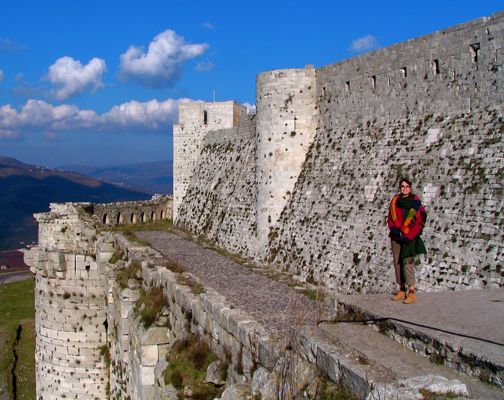
Hama, Krak & Afamea
Hama is a medium sized town midway between Damascus and Aleppo and so an ideal place to stop for a few days to explore the hinterland. There are plenty of things to see including two of the highlights of Syria, the crusader castle of Krak des Chevaliers and the Roman ruins at Afamea.
Hama is also a worthy stop in itself. It is situated on the banks of the Orontes River in one of the few fertile areas of Syria. It has a pleasant central market area and a small, attractive and partially reconstructed old town. However, it is most famous for its water wheels which have been in place here for over 1500 years. In the middle of town there are a couple which form the centrpiece of an attractive park (were it not for all the litter that is a blight to most of Syria).



Like the rest of syria it also has its fair share of old American cars

An Nuri mosque built by Salah ah Din’s (Saladin’s) uncle in 12th century. Alongside is the inside of Azem Palace Museum, an amazing house of a former governor. As of December ’07 it’s being totally renovated but is still open to the public.
Of course the food was great and here is a combination of the most common dips: At the top is hummus, left is babaghanoug made from mashed aubergines, bottom is mutabball, like babaghanoug but with added tahina, on the right is a dip I can’t remember the name of but it’s made with red peppers and in the middle ore stuffed vine leaves.


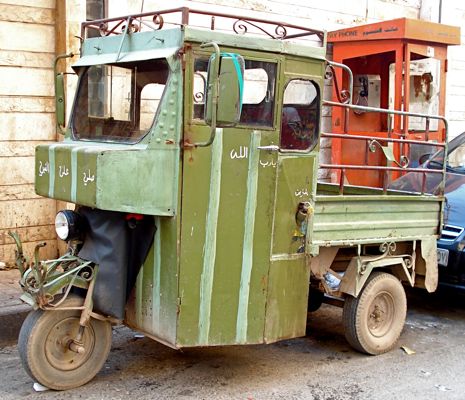
As stated above there are a few Syrian highlights nestled in the hills not far from Hama. Here is the crusader castle of Musyaf. This place is most famous for its subsequent inhabitants, the Assasins, an extreme Muslim sect which carried out the first ‘assassinations’ – they sneaked into encampments and killed many leaders, both Muslim and Christian, who had got on the wrong side of their leader – the mystical ‘Man of the Mountains”. Their name is derived from Hashish because they were thought to have been high on the weed when they performed their deadly missions.
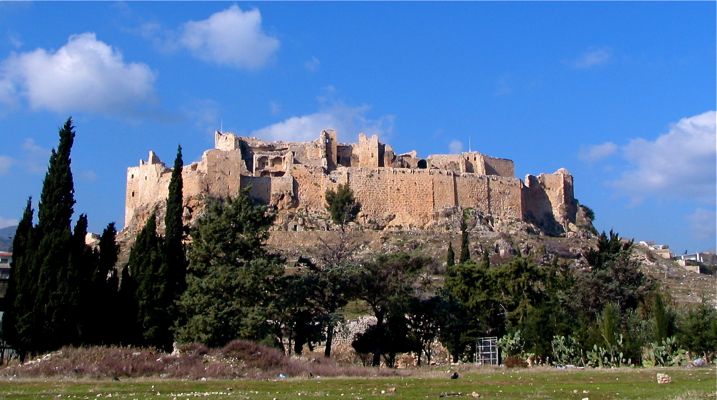
The most famous crusader castle and some say the most perfect castle in the world is Krak des Chevaliers. It was never stormed in battle so it looks pretty much the same as it did 800 years ago. It was built by the local sultan around 1000AD, but then it was totally rebuilt after it was taken by the crusaders taking up its present form in the 12th century. It remained in crusader hands until almost the rest of the Holy Land was retaken by the muslims and in fact the remaining crusaders in it decided to surrender rather than be starved out and were among the last crusaders to leave.

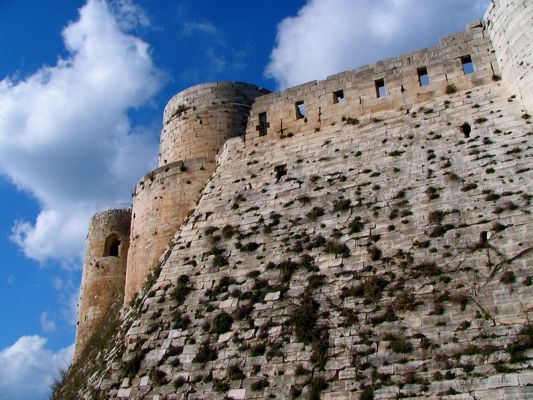

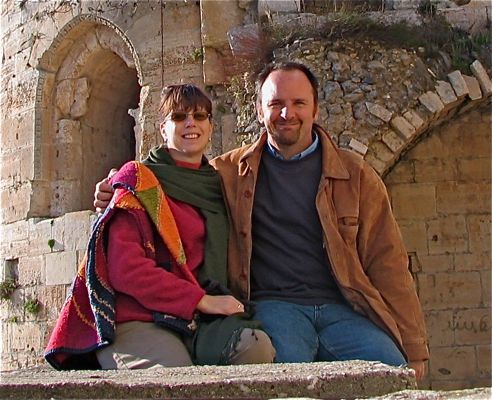
The crusaders may have left centuries ago, but there are still plenty of christians in Syria (10% of the total population) many of them in the villages around Krak. Here was a display we saw in one of the village squares.
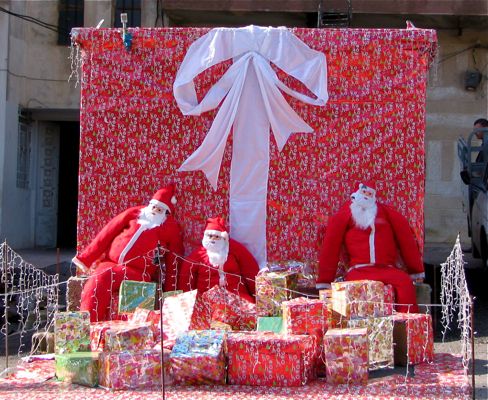
North of Hama is another of Syria’s little gems. This is the Roman site of Apamea. Most of the ancient city is still just a pile of rocks and stones but they have restored the cardo which is the main street. This stretches for 2kms and features hugely impressive collonades. For me it was one of the few Roman sites that gives you a really good idea of what it was like centuries ago and how impressive it was in those days.
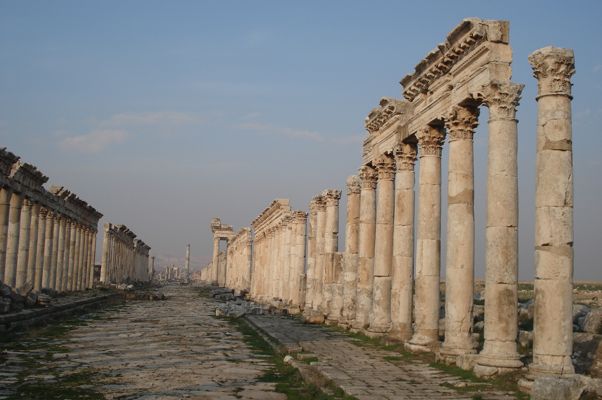
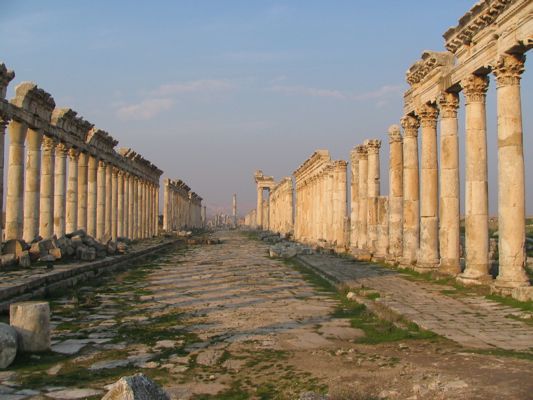
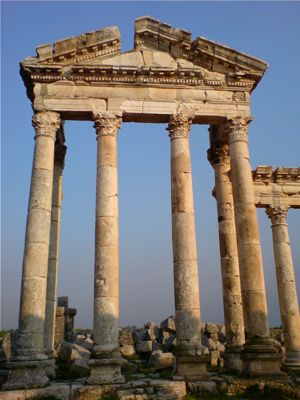
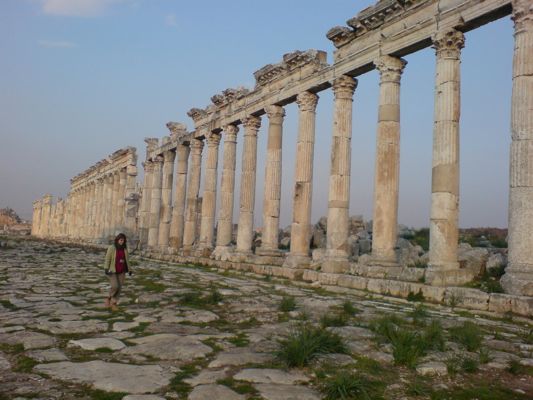
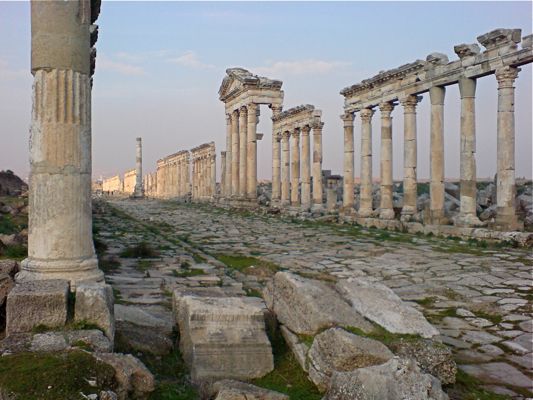
While we were there, there were of course only a handful of tourists but it was also the only place in Syria where we were bothered by postcard touts riding around on scooters. However, I did manage to pick up a couple of rare Roman/Byzantine coins from one of them for a few British coins. Mind you in purely monetary terms I think he may have got the better deal.

Some more photos of our trip here

